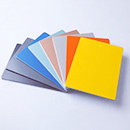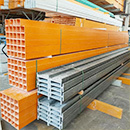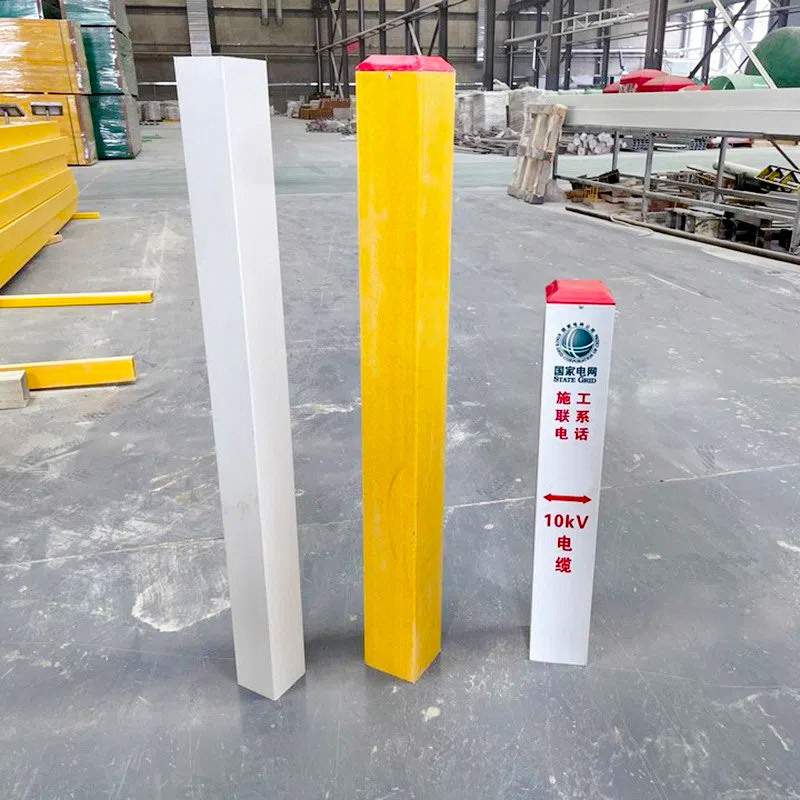Vacuum-Infused FRP Panels: The Ultimate Weather-Resistant Solution for Modern Construction
Jun 18,2025

Vacuum-Infused FRP Panels: A Reliable Choice for All Weather Conditions
In the ever-evolving field of construction and architectural design, the choice of materials plays a significant role in the durability, efficiency, and aesthetic appeal of a structure. One of the most innovative materials gaining traction in the industry is **Vacuum-Infused Fiber Reinforced Polymer (FRP) Panels**. These panels offer a unique blend of strength, lightweight properties, and resistance to harsh weather conditions. In this comprehensive guide, we delve deep into the features, benefits, applications, and the reasons why Vacuum-Infused FRP Panels are becoming a preferred choice for modern construction.
Table of Contents
1. Introduction to Vacuum-Infused FRP Panels
2. What are Fiber Reinforced Polymer Panels?
- 2.1 Components of FRP
- 2.2 The Vacuum Infusion Process
3. Advantages of Vacuum-Infused FRP Panels
- 3.1 Unmatched Durability
- 3.2 Lightweight Characteristics
- 3.3 Superior Weather Resistance
4. Applications of Vacuum-Infused FRP Panels
- 4.1 Use in Commercial Buildings
- 4.2 Applications in Residential Structures
- 4.3 Marine Applications
5. Installation and Maintenance of FRP Panels
6. Comparing FRP Panels with Traditional Materials
7. Environmental Impact and Sustainability
8. Conclusion
9. Frequently Asked Questions
Introduction to Vacuum-Infused FRP Panels
FRP panels have redefined the construction landscape due to their impressive properties. Especially when produced via the vacuum infusion method, they achieve optimal strength and minimal porosity. This introduction serves as a gateway to understanding why these panels are favored by architects and builders across various sectors.
What are Fiber Reinforced Polymer Panels?
Fiber Reinforced Polymer (FRP) panels are composite materials made of a polymer matrix reinforced with fibers, such as glass, carbon, or aramid. These panels are engineered to provide high strength-to-weight ratios and excellent resistance to environmental factors.
Components of FRP
The primary components of FRP panels include:
- **Polymer Matrix**: The resin that binds the fibers together, providing structural integrity and protection against moisture and chemicals.
- **Reinforcing Fibers**: These fibers, typically glass or carbon, contribute to the overall strength and rigidity of the panels.
The Vacuum Infusion Process
The vacuum infusion process is a cutting-edge method for manufacturing FRP panels. It involves placing dry fibers in a mold and then sealing it. A vacuum is applied to draw resin into the mold, ensuring an even distribution and minimizing air bubbles. This technique yields a uniform product with enhanced mechanical properties.
Advantages of Vacuum-Infused FRP Panels
Vacuum-Infused FRP Panels offer numerous advantages that make them an attractive choice for construction projects.
Unmatched Durability
One of the most significant advantages of FRP panels is their **durability**. These panels resist impacts, scratches, and wear, ensuring longevity even in harsh environments. They are less prone to cracking and warping compared to traditional materials, which translates to lower maintenance costs over time.
Lightweight Characteristics
Despite their strength, FRP panels are remarkably lightweight, making them easier to handle and install. This characteristic reduces transportation costs and allows for quicker assembly on site, ultimately leading to savings in labor and time.
Superior Weather Resistance
Vacuum-Infused FRP Panels excel in **weather resistance**. They withstand extreme temperatures, UV radiation, moisture, and corrosive environments without degrading. This resilience makes them suitable for various applications, from coastal buildings to arid desert structures.
Applications of Vacuum-Infused FRP Panels
The versatility of Vacuum-Infused FRP Panels allows them to be utilized in a wide range of applications.
Use in Commercial Buildings
In commercial constructions, FRP panels are ideal for façades, roofing, and interior partitions. Their aesthetic appeal combined with durability makes them a popular choice for shopping centers, offices, and hospitals.
Applications in Residential Structures
In residential settings, these panels can be used for decking, siding, and even custom furniture design. Homeowners appreciate their low maintenance requirements and the ability to withstand the elements while maintaining an attractive appearance.
Marine Applications
Due to their superior resistance to moisture and corrosion, Vacuum-Infused FRP Panels are perfect for marine applications, including boat hulls and docks. Their lightweight nature ensures that vessels are more fuel-efficient without sacrificing strength or safety.
Installation and Maintenance of FRP Panels
The installation of Vacuum-Infused FRP Panels is straightforward and can often be completed without specialized equipment. Panels can be cut, drilled, and fastened just like traditional materials. Regular maintenance involves simple cleaning and occasional inspections for any signs of wear or damage.
Comparing FRP Panels with Traditional Materials
When comparing FRP panels with traditional building materials such as wood, metal, and concrete, several key differences arise:
- **Weight**: FRP panels are significantly lighter than metals and concrete, making them easier to transport and handle.
- **Durability**: Unlike wood, FRP panels resist rot, corrosion, and weathering, leading to longer lifespans.
- **Aesthetics**: FRP panels can be manufactured in various finishes and colors, providing more design flexibility than standard materials.
Environmental Impact and Sustainability
Vacuum-Infused FRP Panels are increasingly recognized for their sustainability. The materials used can be recycled, and their long lifespan reduces the need for frequent replacements. Additionally, their energy-efficient properties contribute to lower heating and cooling costs in buildings, benefiting the environment.
Conclusion
In conclusion, Vacuum-Infused FRP Panels represent a **reliable choice for all weather conditions** in the construction industry. Their unique combination of durability, lightweight properties, and resistance to environmental factors makes them an ideal material for various applications, from commercial buildings to marine structures. As architects and builders continue to seek innovative solutions that meet modern demands, FRP panels will undoubtedly play a pivotal role in shaping the future of construction.
Frequently Asked Questions
1. What are the primary benefits of Vacuum-Infused FRP Panels?
Vacuum-Infused FRP Panels offer durability, lightweight characteristics, weather resistance, and low maintenance requirements, making them a superior choice for construction.
2. How are FRP panels installed?
Installation is straightforward, as FRP panels can be cut and fastened using standard tools, similar to traditional building materials.
3. Are FRP panels environmentally friendly?
Yes, they can be manufactured from recyclable materials and contribute to energy efficiency in buildings, making them a sustainable choice.
4. Can FRP panels be used in residential constructions?
Absolutely! FRP panels are suitable for various residential applications, including siding, decking, and custom furniture.
5. How do FRP panels compare to traditional materials like wood and metal?
FRP panels are lighter, more durable, and resistant to weathering than wood, and they do not suffer from corrosion like metals, making them a preferred choice in many cases.





